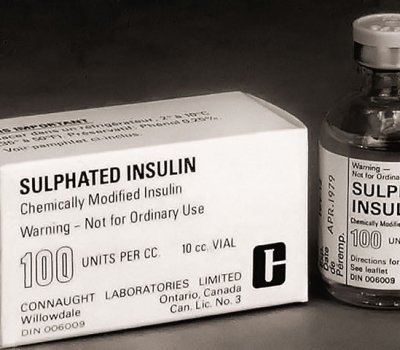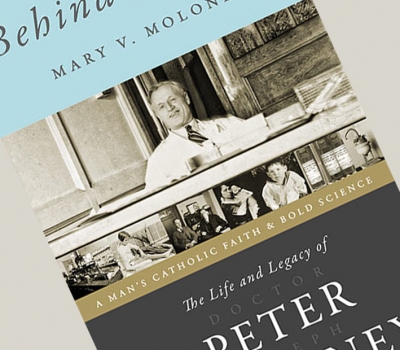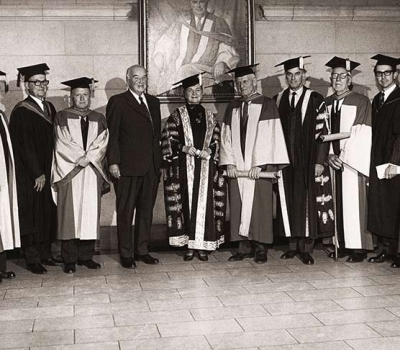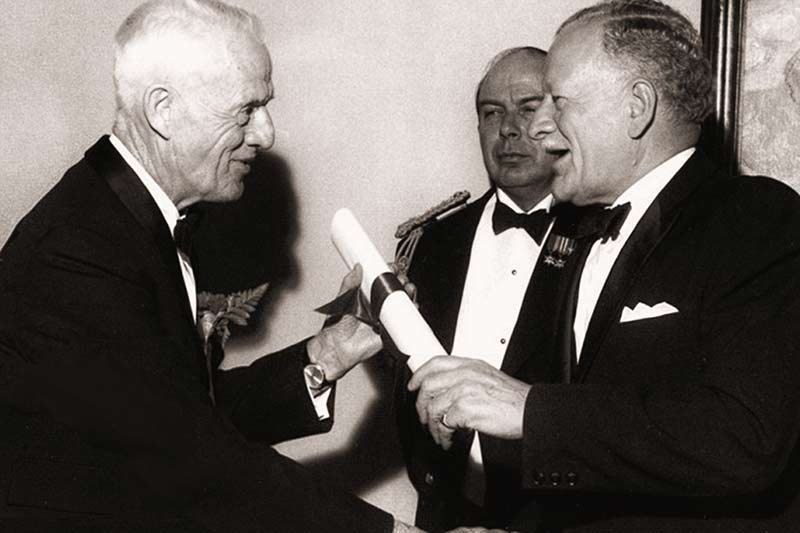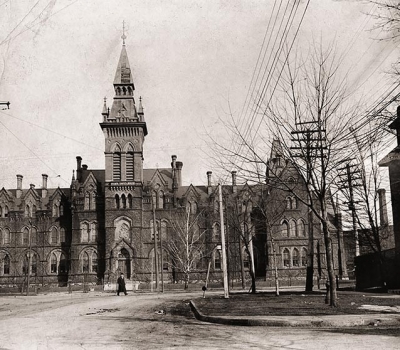"Neil, there are one or two places in this which I would alter, for reasons of clarity.-Peter.
Peter-I see no place that you would need to alter for reasons of clarity."
Dr. Moloney requests the advice of his friend and colleague Dr. Neil Mckinnon about the article that follows, a historic summary of diphtheria toxoid in Canada written by the man who worked out its first production in North America. First, more of the note from Dr. McKinnon.
"Peter, I see no place that you would need to alter for reasons of clarity. I don't know how you write now but in 1955 you must have had the knack. The first sentence of para 2 is a gem in itself. Your reference to McK and Ross is very kind. I haven't checked history for its validity-nor will I... " (see Letters)
Diphtheria Toxoid in Canada, cjph Volume 46 Number 2
It is now more than 30 years since the late Dr. J. G. Fitzgerald, Connaught Medical Research Laboratories, introduced diphtheria toxoid into Canada, shortly after its development by Ramon of the Pasteur Institute in Paris.
The travail which accompanied its introduction is now all but forgotten. There was the simple but sobering fact that toxoid derived from toxin by the action of formaldehyde was indistinguishable from toxin save that it was non-toxic, and hence the alarming possibility of a fatal mistake was always present. And then there was the question of the mode of action of fomaldehyde on toxin. Certain chemical reactions of formaldehyde are reversible. Was it possible that the toxin-formaldehyde-toxoid reaction was of this type and that toxoid could be transformed into toxin? A great deal of thought and work were expended on this question. There was indeed suggested evidence that reversibility might occur. For example, it was found that the intradermal reaction elicited by diphtheria toxoid in certain individuals could be neutralized in part by antitoxin (horse) mixed with the toxoid before injection (1). These findings seemed to conform to the very definition of diphtheria toxin and hence to suggest the obvious and very disturbing possibility that in some individuals toxoid could be converted into toxin. Then there was the observation curious at the time, that guinea pigs injected with incompletely detoxified toxin developed paralysis before death and showed at the time of death appreciable levels of diphtheria antitoxin (1). Here were guinea pigs which had become actively immune and which nevertheless died with symptoms of diphtheritic paralysis. Was it possible that antitoxin was not effective in preventing paralysis? One can now give reasonable explanations for these odd phenomena but when first observed they were very puzzling and very disturbing.
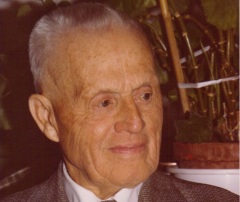 After innocuity had been established and toxoid was made available, McKinnon and Ross showed that diphtheria toxoid was effective in preventing diphtheria. These investigators analyzed the results of innoculation with toxoid in school children in Toronto for the years 1927 to 1932. Among 46,000 children given three doses of toxoid, the diphtheria rate was only one-tenth of that among school children who had not received toxoid. That is, toxoid had effectively protected 90 percent of those innoculated. This is the first instance in which a non-living antigen had been shown, beyond any question of doubt, to be effective in preventing disease. This proof of the efficacy of toxoid is in no way affected by the observation that morbidity and mortality from diphtheria has, in certain places fallen in recent years, for reasons not associated with specific measures of prevention. And further because diphtheria toxoid had been shown to be an effective antigen in preventing disease, a validity and a reality were given to studies based on antitoxin titrations and on Schick test findings.
After innocuity had been established and toxoid was made available, McKinnon and Ross showed that diphtheria toxoid was effective in preventing diphtheria. These investigators analyzed the results of innoculation with toxoid in school children in Toronto for the years 1927 to 1932. Among 46,000 children given three doses of toxoid, the diphtheria rate was only one-tenth of that among school children who had not received toxoid. That is, toxoid had effectively protected 90 percent of those innoculated. This is the first instance in which a non-living antigen had been shown, beyond any question of doubt, to be effective in preventing disease. This proof of the efficacy of toxoid is in no way affected by the observation that morbidity and mortality from diphtheria has, in certain places fallen in recent years, for reasons not associated with specific measures of prevention. And further because diphtheria toxoid had been shown to be an effective antigen in preventing disease, a validity and a reality were given to studies based on antitoxin titrations and on Schick test findings.
Let it be said that the Schick test is a useful and a reliable test. Criticism and condemnation of it have been made but these have arisen mainly because of faulty test materials, because sometimes the toxin was unstable and under strength and because of inadequacy of the heated-toxin control. In Canada suitable Schick test toxin and control have been available for years.
The work of the late D. T. Fraser and his colleague F. O. Wishart on the efficacy of diphtheria toxoid in various forms is too well known to require elaboration here. In the laboratory also, there was the outstanding work of Edith M. Taylor on diphtheria toxin production which gave toxins of higher potency than any attained heretofore; the work of C. O. Seibenmann on the important matter of testing and P. J. Moloney and M. D. Orr on purification and reactivity of toxoids.
In recent years L. B. Holt in England has developed a new toxoid product of high immunizing activity, namely purified diphtheria toxoid adsorbed on aluminium phosphate. Alum precipitated toxoids somewhat analogous to Holt's toxoid have been available for a number of years. All these insoluble aluminium salt-toxoids possess certain advantages and certain disadvantages as compared with fluid toxoid. Our attitude toward this type of insoluble antigen has tended to be conservative. It is an attitude of open-mindedness which implies neither condemnation of the product nor indifference toward it.
A combined antigen consisting of a mixture of aluminium phosphate-toxoid with pertussis vaccine has been advocated and extensively used. It is interesting to note however that Bousfield and Holt (2) in a recent paper from Englnad, where this mixed antigen was first used, give preference now to the simple mixture of pertussis vaccine and fluid diphtheria toxoid. And in their paper they give evidence of the high immunizing activity of the diphtheria component of the mixed antigen. In the words of the authors: "We are convinced that the required immunological standard is fully achieved by the administration of three spaced injections of plain purified toxoid with pertussis vaccine." It is gratifying to have independent approval of the type of mixed antigen which has been used in Canada for a number of years but which is now superseded by a more useful mixed antigen consisting of pertussis vaccine, fluid diphtheria and fluid tetanus toxoids.
Diphtheria toxoid has rendered a magnificent service to Public Health in Canada. It is to be hoped that the very effectiveness of toxoid will not lull the public into a false sense of security.
P. J. Moloney
REFERENCES
1. Moloney, P. J., and Weld, C. B.: unpublished
2. Bousfield, G., and Holt, L. B.: Medical Officer, 1954, 92:289.
Text originally published in the Canadian Journal of Public Health Association, 1955, Volume 46, Number 2, pp. 87-88

